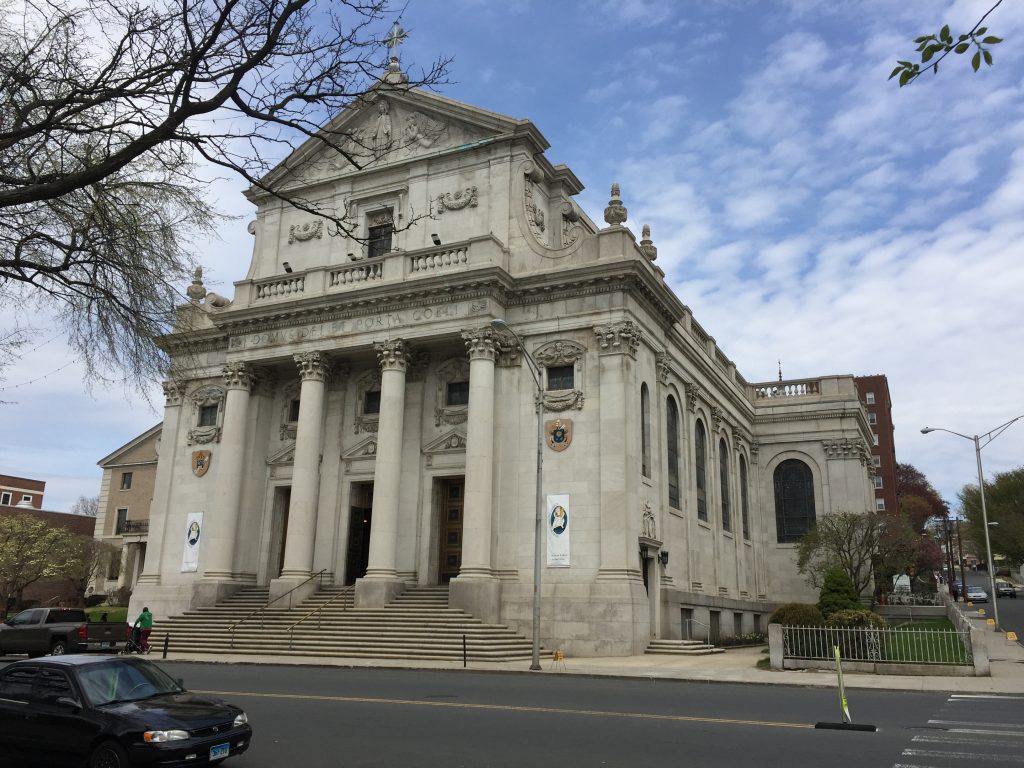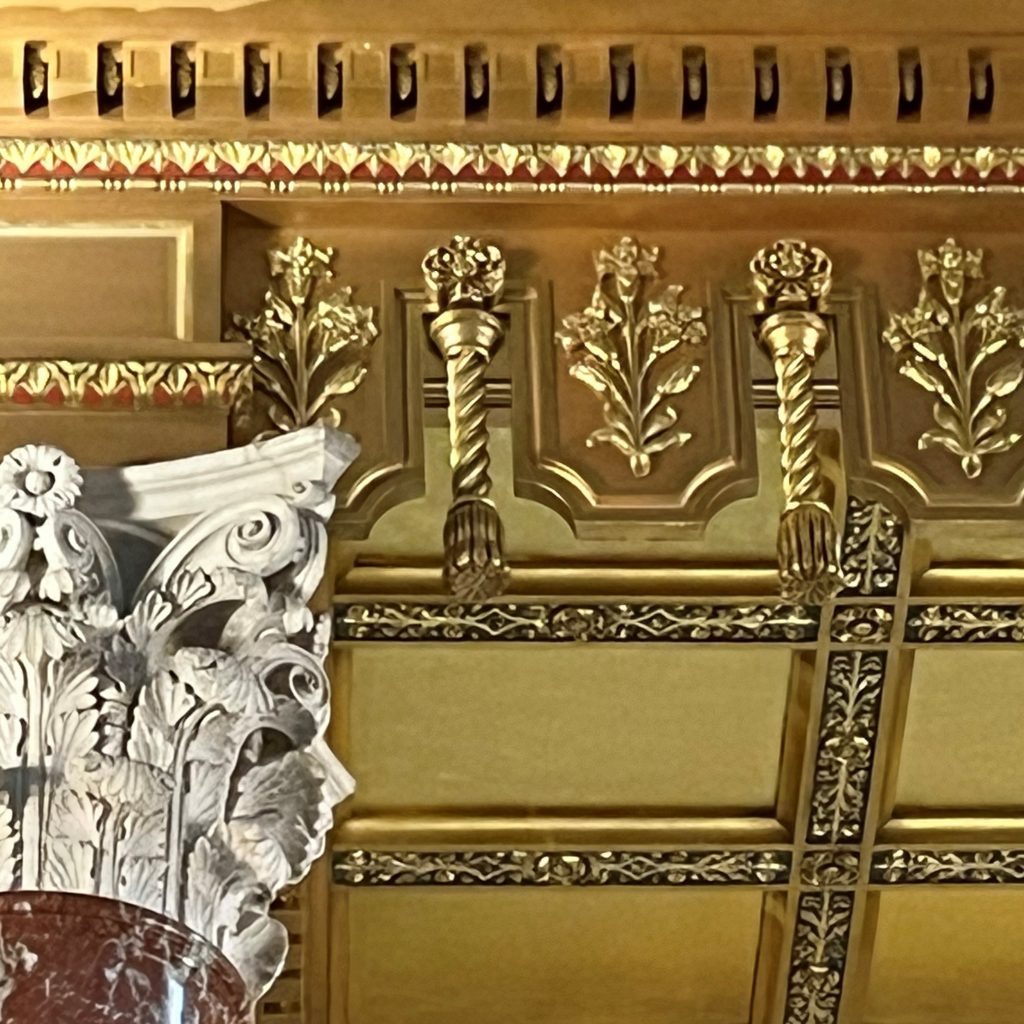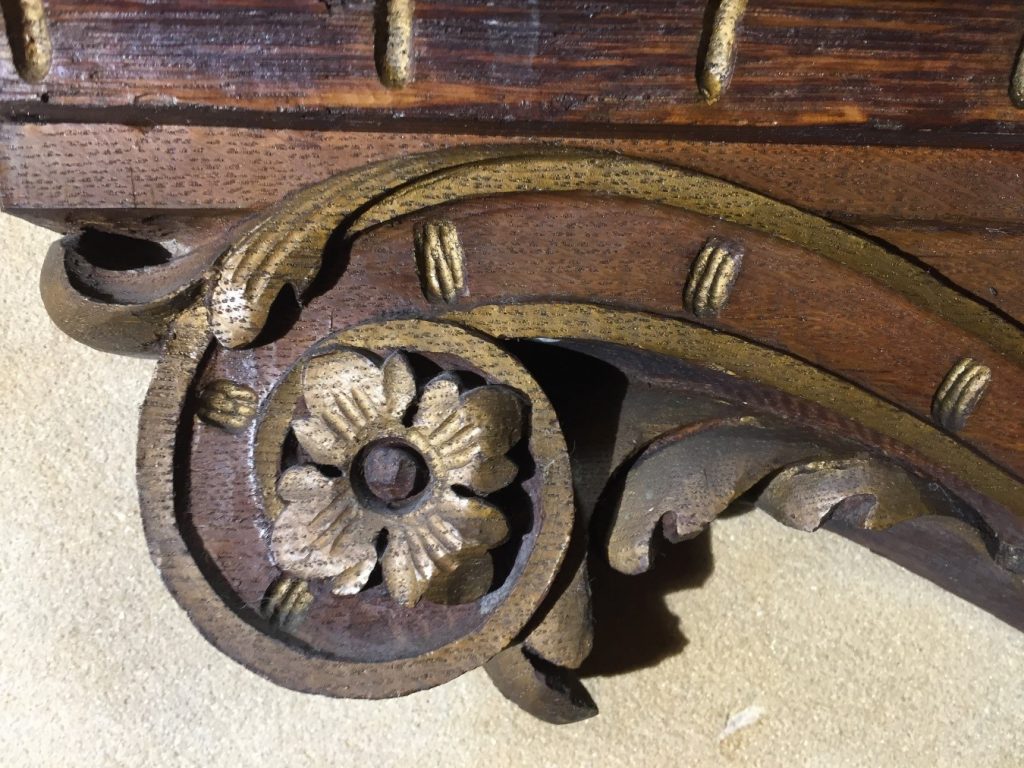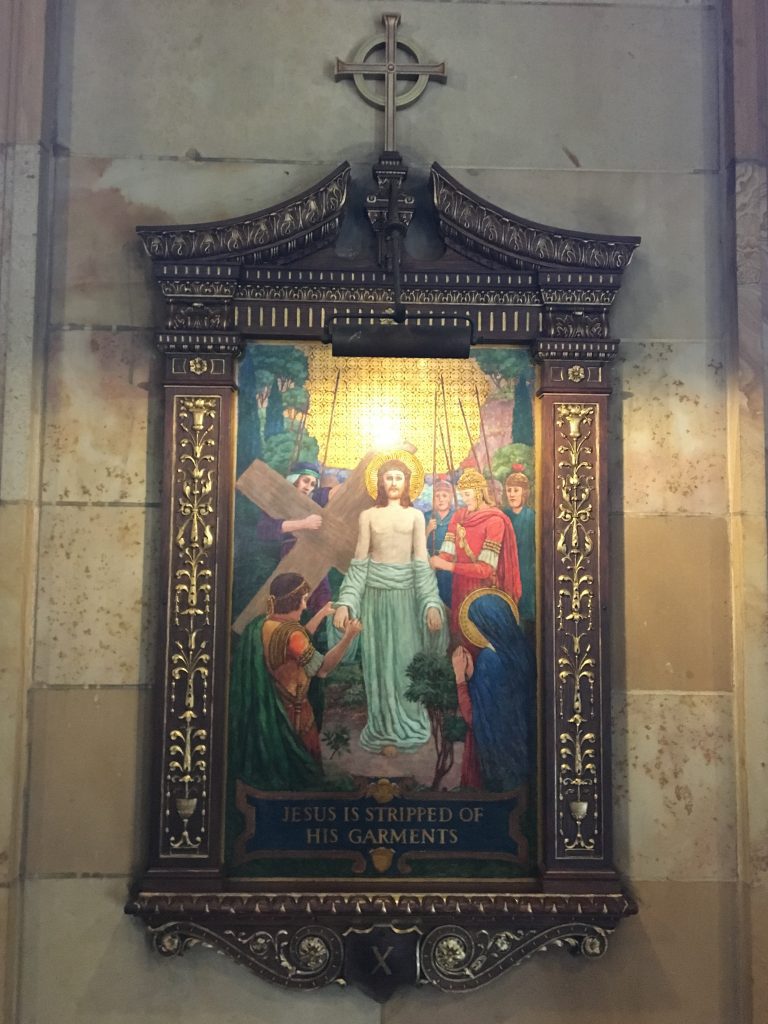Immaculate in Every Way

If you ever find yourself driving through Connecticut in a mess of highway ramps connecting Route 8 and Interstate 84, it is very likely that just below are the streets of Waterbury. It is worthwhile to take the opportunity to pay a visit to one of America’s most beautiful churches and appreciate the once magnificent and prosperous city, blessed by many buildings constructed during the city beautiful movement.
Maginnis and Walsh, prominent architects based out of Boston, outdid themselves designing a love letter to the Italian Renaissance, American prosperity and the Catholic Faith in constructing the Immaculate Conception Church, now a minor basilica. A study of the original blueprints from 1928 displays the careful attention to ensure tha t even the candlesticks and the chairs were properly proportioned and decorated specific to this interior. Every detail, inside and out, from the architecture to the furnishings, was designed uniquely for this church. Canning had the great privilege of studying and observing the intricate design of the church during an extensive conservation project that addressed numerous decorative elements of various mediums.
Standing proudly on the city green, tall corinthian columns of the church rise from a rippling flight of stairs that seem to flow from the grand, bronze doors. Once entering the narthex, larger-than-life statues of St. Paul and St. Patrick greet the visitor from the left and right. Above the wood, narthex doors opening to the church are symbols of faith, hope and charity. Upon entering the nave proper, the magnitude of the church interior is immediately striking and the eye is drawn with ease to the heart of the building.






In the sanctuary, a baldacchino canopies a pristine marble altar and tabernacle just below. Over the years the marble altar had lost its original brightness and depth. In order to rejuvenate the marble, a polishing process was applied. The church interior has a way of introducing its details in portions ordered by their importance. From the tabernacle, the eye is free to study the baldacchino in full and truly appreciate the solid marble columns and canopy carved of wood but simulated with metal leaf to appear bronze. Investigative studies uncovering the materials and methods applied to the canopy informed the restoration process. Architectural carvings found throughout the baldacchino including bead and reel, lamb’s tongue and acanthus leaves in various forms were articulated with gold leaf and polychroming.
The apse dome features a central mosaic of the Blessed Mother’s Coronation flanked by St. Augustine and St. Catherine of Alexandria. The Marian figure is depicted in royal blue robes with a mass of red hair, complimented by delicate and serene features. Her eyes are raised to the heavens and she stands upon the moon crushing the serpent under her feet. The mosaic required comprehensive conservation cleaning as well as minor repairs.
The Immaculate is a church fit for the Queen crowned in the mosaic and worthy of the Sacrifice of the Mass. The perfect architectural proportions of the interior allow the visitor to be impressed but not overwhelmed by the size. The fair stones of the nave convey a gentle strength and are uniformly interrupted by stained glass windows bringing light and color into the room. In between each window are painted Stations of the Cross by James William Fosdick. The Station frames are made of wood and feature relief carvings consistent with the Italian Renaissance style of the church. The heavy stain and varnish to the frames was carefully cleaned. Repairs to the gilded details accentuating the classical foliage replete with acanthus leaves, rosettes and the like were restored to the original luster intended.
Walking down the center aisle, the transepts and side shrines make themselves known. Altars to Mary and Joseph balance the sanctuary. The marble statues rest upon pedestals proportioned within renaissance niches. Above the side altars and in the upper walls of the transepts, six lunette paintings by Rudolf Scheffler received minor, insitu conservation treatments and repair.
The conservation efforts carried out by Canning carefully observed the design intent of Maginnis and Walsh as well as the artists they employed. To work alongside and preserve the work of such prolific architects and artists presents a great honor and affirms Canning’s commitment to preserving historic interiors as well as traditional methods for the enjoyment of the next generation.








Studying the Original Maginnis & Walsh Blueprints




